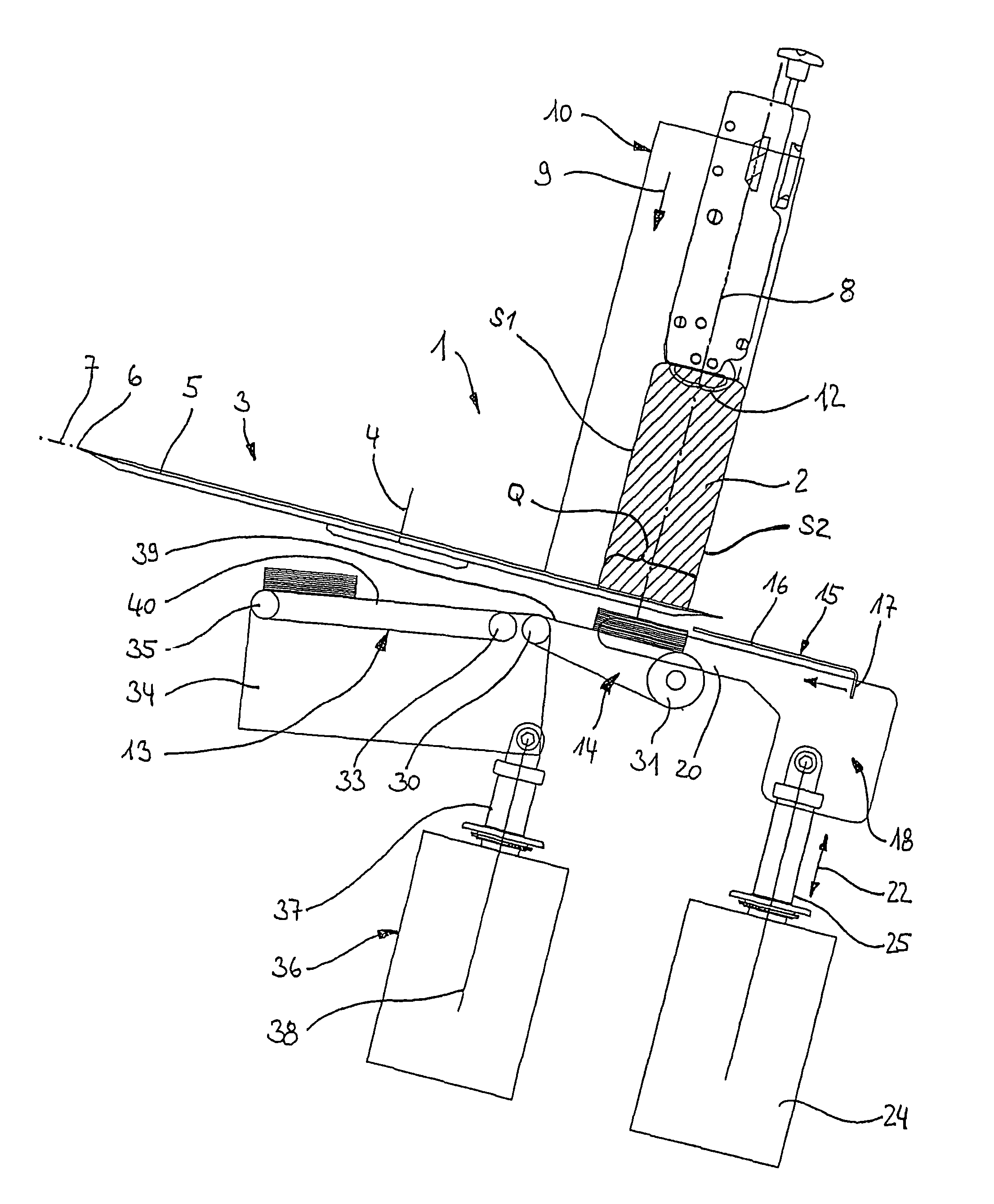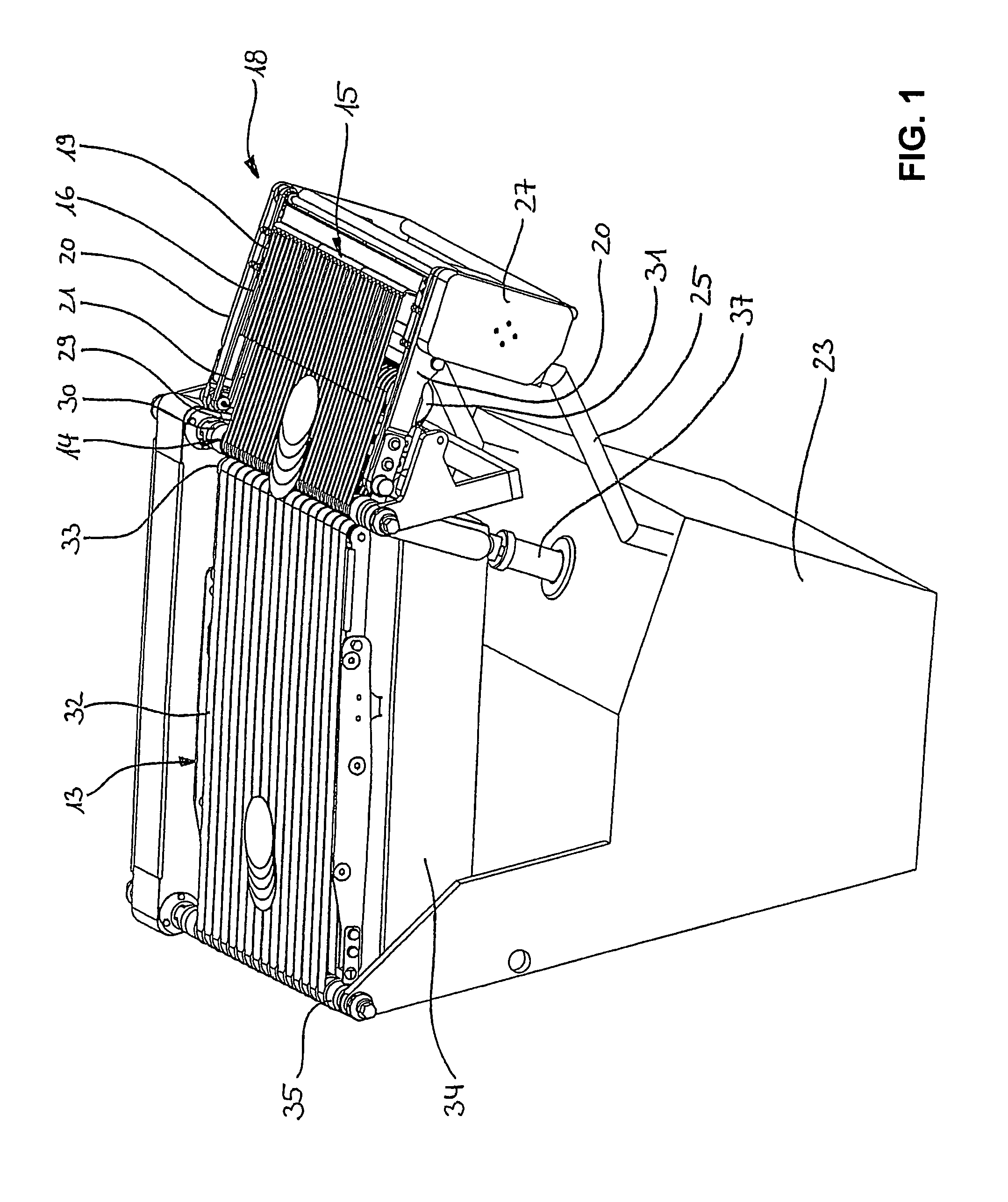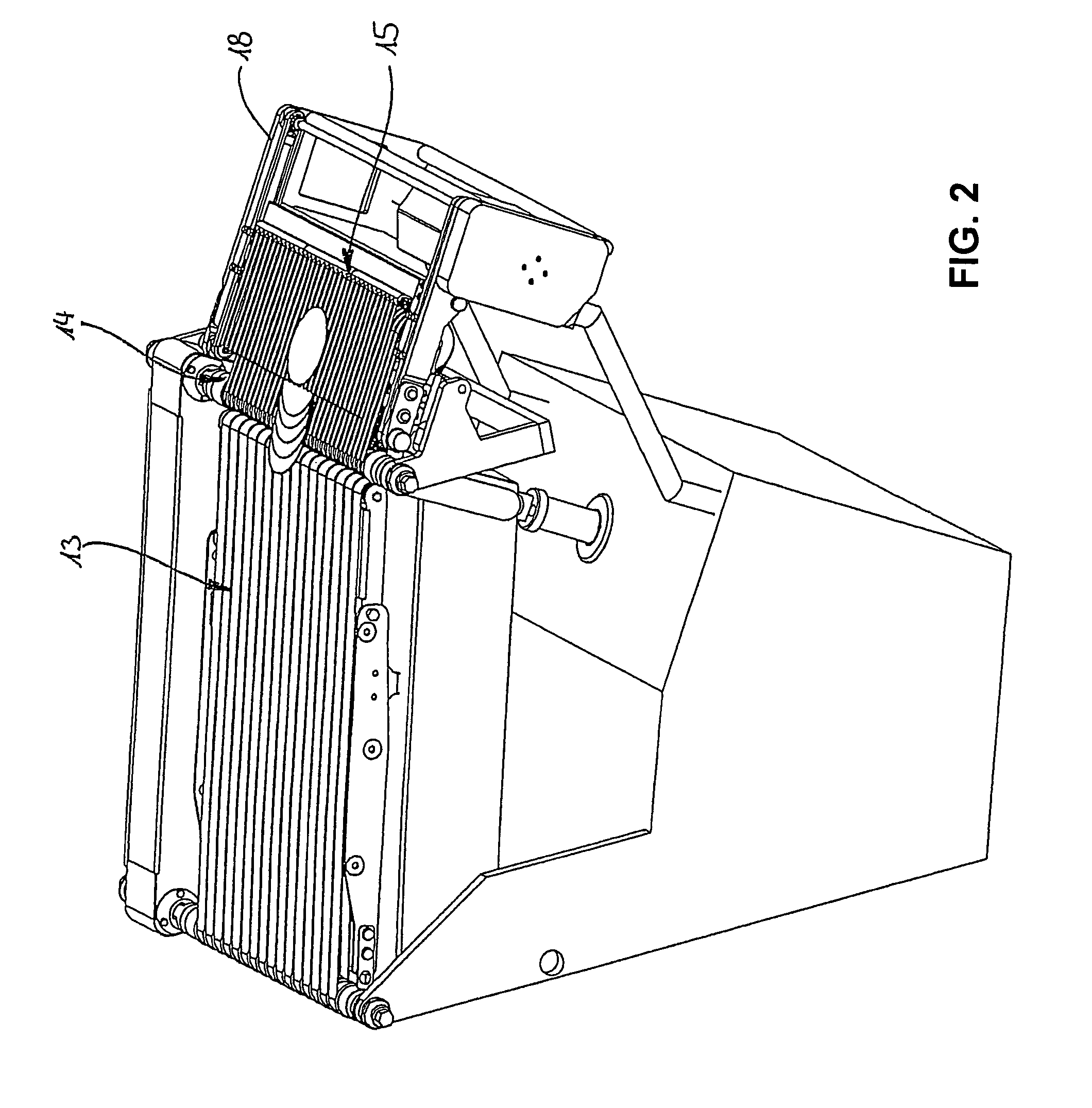Method for cutting a food standard into slices
a technology of food strands and cutting tools, applied in the direction of metal working devices, etc., can solve the problems of uneven high friction of feeding of food strands, and high cutting performance of food strands, and achieve high geometrical precision of cutting off slices, low design complexity, and high cutting performance
- Summary
- Abstract
- Description
- Claims
- Application Information
AI Technical Summary
Benefits of technology
Problems solved by technology
Method used
Image
Examples
Embodiment Construction
[0061]A device 1 for cutting a food strand 2 (e.g. sausage, cheese etc.) illustrated in FIGS. 1 through 5 in details in a perspective view and in FIGS. 6 through 10 in a lateral view includes a cutting device 3 only illustrated in FIGS. 6-11 which includes a blade 5 rotating about a rotation axis 4, wherein the blade is configured, for example, as a sickle blade, alternatively also configured in the form of a circular blade rotating at a pivot arm like a planetary gear. A cutting edge 6 defines a cutting plane 7 through rotation, wherein the cutting plane is oriented perpendicular to a longitudinal axis 8 of the food strand 2. The longitudinal axis 8 extends in parallel with the feed direction illustrated by an arrow 9 in which the food stand 2 is pushed forward through a feed device 10 which is only schematically illustrated wherein the forward movement occurs towards the blade 5 of the cutting device 3. The feed device 10 includes a gripping device 11 at its upper end, wherein the...
PUM
| Property | Measurement | Unit |
|---|---|---|
| thickness | aaaaa | aaaaa |
| thickness | aaaaa | aaaaa |
| thickness | aaaaa | aaaaa |
Abstract
Description
Claims
Application Information
 Login to View More
Login to View More - R&D
- Intellectual Property
- Life Sciences
- Materials
- Tech Scout
- Unparalleled Data Quality
- Higher Quality Content
- 60% Fewer Hallucinations
Browse by: Latest US Patents, China's latest patents, Technical Efficacy Thesaurus, Application Domain, Technology Topic, Popular Technical Reports.
© 2025 PatSnap. All rights reserved.Legal|Privacy policy|Modern Slavery Act Transparency Statement|Sitemap|About US| Contact US: help@patsnap.com



